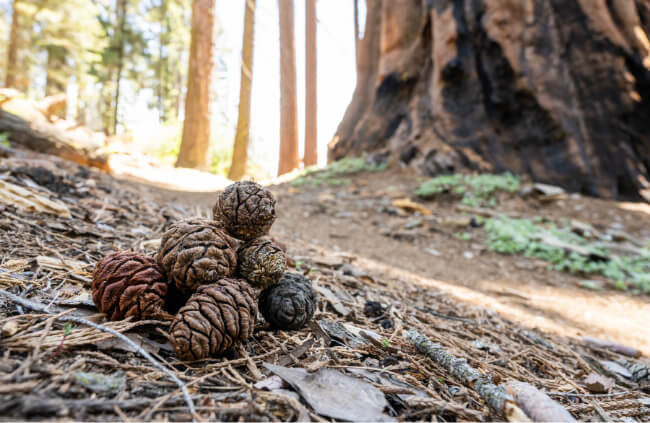The more I garden the more I become infatuated with trees and the more it disturbs me when someone chops one down without a legitimate reason (removing a sequoia tree to make way for an ornamental weeping mulberry is not a legitimate reason). It’s the benefits of having a tree (or trees) in your garden that far outweighs removing them.
So what about planting a giant sequoia tree in your garden? If you have the space and you’re prepared to be patient as it grows then I believe you will find the effort worthwhile.
More...
Getting to Know Giant Sequoia Trees

I saw my first sequoia tree in an arboretum in Pemberton and was so impressed with the look, and obviously their giant size, that I considered that one day I would like to plant one in my own yard. As trees go they’re definitely in my favourites of all time.
The giant sequoia tree is a native of the Sierra Nevada, California and while it grows naturally in many areas there are three places where they are protected; the Sequoia and Kings Canyon National Park and the Giant Sequoia National Monument.
They are the largest trees in the world, certainly dwarfing our own large Karri’s, and can grow between 50-85 m (150-280 ft) with a 5-7 m (16-2 3ft) diameter.
The largest living sequoia tree is the giant General Sherman that resides in Giant Forest, Sequoia National Park. It has been recorded at 83.8m (274.9ft) and is estimated at being the weight of approximately 10 blue whales – NB: Careful where you park your car. They are a conifer and are one of only three species of redwoods.
Can you plant giant sequoia trees in your own yard in Australia?
Sure. Obviously the only limiting factor is the size that they grow to. They’re not a slow-growing tree but will take some to grow to full maturity (expect about 150 years). A tree grown in Italy was recorded at 22m (72ft) after only 17 years so you will have a decent sized tree within your lifetime.
Ideal Conditions for Growing Giant Sequoia Trees
They can grow in cold climates and have been known to benefit from deep snow coverage on top of their roots. However, they’re not big fans of humid climates and seem to get viral infections if they are grown in these conditions. They can grow in warm climates that provide a warm heat.
They like a rich humus to grow in and prefer slightly acidic soils. Soil testing will help you know what soil you have in your garden.

How to Propagate Sequoia Trees
The sequoia is best propagated from seed and this is its natural tendency. The seeds grow in cones that are usually massed at the top canopy of the tree. If you have a cone and want to use the seeds as propagating material you might find the best way to do this is by smoking the cone (doesn’t sound quite right – does it?) or placing it in the microwave for a minute or so.
The heat will prepare the cone for release and you can then plant them into some propagating mix.
While there is nothing terrifically hard about doing this, if you want to see this tree grow in your lifetime you may want to purchase a small sapling and start from that instead. However, if you’re up for the challenge, try growing them from seed.
Published on June 5, 2023 by Maisie Blevins
Last Updated on November 21, 2025


Get Your Free Guide:
Master Growing Australian Natives eBook
A Must Have Complete Guide for Every Australian Garden
Get Your Free Guide:
Master Growing Australian Natives eBook
A Must Have Complete Guide for Every Australian Garden




